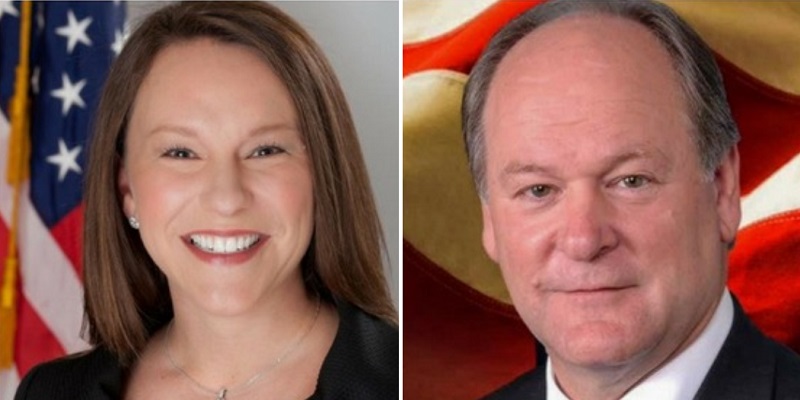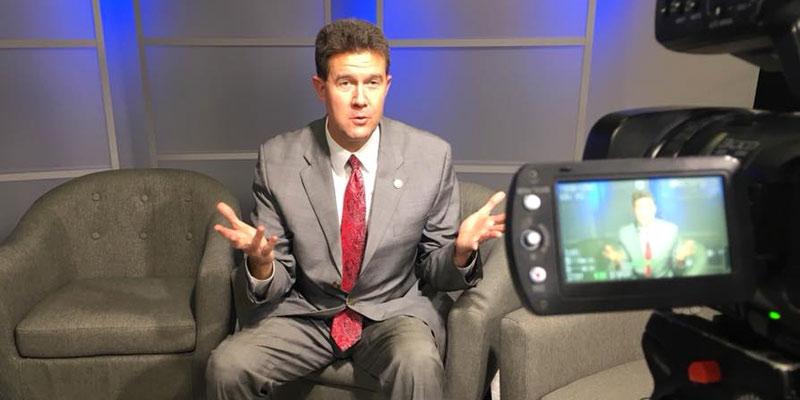Last night, South Carolina State Rep. Katie Arrington pulled off what a lot of candidates in Alabama have attempted but haven’t entirely pulled off: She ran a race for and about President Donald Trump against an incumbent Rep. Mark Sanford (R-S.C.), who apparently wasn’t sufficiently onboard with the so-called “Make America Great Again” agenda.
Then she won.
She narrowly took the 50-plus percent necessary to avoid a runoff race and will likely be elected to Congress in the heavily Republican congressional district in November.
Predictably, outside observers from national media are suggesting the same scenario is shaping up for Rep. Martha Roby (R-Montgomery), who faces a run-off contest next month for the Republican Party’s nod against former Montgomery mayor and one-term Democratic Congressman Bobby Bright.
“[S]anford is the second Republican Trump critic in two weeks to run into primary trouble; last week in Alabama, Rep. Martha Roby fell below 50 percent of the vote and was pulled into a runoff in her first primary since declaring she would not vote for Trump in 2016, following the publication of his vulgar comments in the ‘Access Hollywood’ tape. Roby has since tried to mend fences, but she still suffered a sharp drop in Republican primary support this year,” Politico’s Elena Schneider wrote in her wrap-up of Sanford’s loss.
Likewise, before the first vote was even cast on Tuesday, The New York Times offered a similar assessment.
Both the Times and Politico are wrong, and they are wrong for multiple reasons.
Roby beat already the three of the Trumpiest pro-Trump candidates last week in the Republican primary single-handedly. Roby received 36,509 votes, roughly 39 percent of the vote. The three candidates running on the so-called pro-Trump platform, State Rep. Barry Moore (R-Enterprise), Roy Moore ally Rich Hobson and Army veteran Tommy Amason, received a combined vote total 30,826, which is 32.9 percent of the vote.
The other 28.1 percent went to Bright, the former Democrat, with 26,297 votes.
If Roby were as vulnerable as we were to believe, how come the combined forces of three pro-Trump candidates still came up short?
Furthermore, there’s more to understanding Alabama’s second congressional district than operating on the assumption it’s just all pro-Trump Republicans. As is the case with the last century of Alabama politics, there is a degree of tribalism and distinct geographic loyalties within AL-2.
In other words, the typical Montgomery media market-River Region Republican voter isn’t a carbon-copy of the typical Dothan media market-Wiregrass Republican voter.
Indeed, they are similar. But for a campaign to succeed in this congressional district, it requires having a strategy that appreciates the distinctions.
There are different turnout patterns. In recent elections, the Wiregrass has struggled with turnout. Additionally, the Wiregrass tends to be a little more conservative than the Montgomery parts of AL-2.
Montgomery has the numbers. It’s no coincidence that two Montgomery candidates, Roby and Bright, are in the runoff and the two Wiregrass candidates, Moore and Hobson are out.
For the sake of argument, let’s say the populated Montgomery parts of Alabama’s second congressional district (Autauga, Elmore, the gerrymandered portion of Montgomery) are a jump-ball that can go either Bright and Roby.
Are we to believe Bobby Bright can run as the Donald Trump-esque candidate with a well-funded Roby campaign carpet-bombing the airwaves with reminders Bright voted for Nancy Pelosi as House Speaker?
Outside of Montgomery, Bright will do well in Dale County, the site of his birthplace. But beyond that specific geographic loyalty, Bright has a much more difficult path in convincing Wiregrass voters he is the most pro-Trump, or perhaps more importantly, the most-Republican candidate.
South Carolina’s first congressional district, where Sanford lost Tuesday night, is dominated by the city of Charleston, S.C. For that reason, there is a higher degree of homogeneity among Republicans voters than in Alabama’s second congressional district.
Nonetheless, the national political media and our hometown media seeking the praise of the national media will still try to build upon the “Roby is anti-Trump” narrative.
It’s a good story for them, especially if Roby wins, as she likely will. They’ll speculate that Alabama’s pro-Trump leanings are exaggerated. (They’re probably right about that, but for the wrong reasons.)
It’s possible Roby would like to have a do-over for her October 8, 2016 “Billy Bush weekend” condemnation of Donald Trump, in which she called on him to “step aside and allow a responsible, respectable Republican to lead the ticket.”
She wasn’t the only one to make that call among her Alabama colleagues. Rep Bradley Byrne (R-Mobile) had the same ill-advised instinct. Yet, he remains bulletproof in Alabama’s first congressional district and is rumored to be looking to a run against Sen. Doug Jones (D-Mountain Brook) in 2020 for U.S. Senate.
What’s the bigger sin in the eyes of Republican voters: a confounding hastily released statement condemning Trump in October 2016, or an actual vote for Nancy Pelosi in January 2009?
My guess is the latter.
The most significant difference between Mark Sanford and Martha Roby regarding Trump is Sanford continued to be outspoken against Trump after his 2016 election win. On the other hand, Roby has avoided public disagreements with Trump.
Even during the entire Roy Moore-Luther Strange-Doug Jones saga, Roby managed to dodge situations that would offer even a hint of being against Trump.
The Roby-Bright runoff isn’t Never Trump against Trump. It’s maybe-Never Trump against Pelosi.
@Jeff_Poor is a graduate of Auburn University and is the editor of Breitbart TV.













